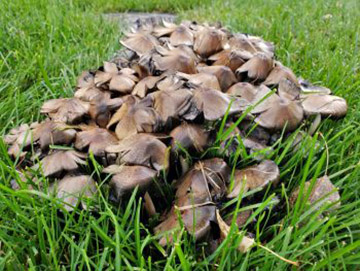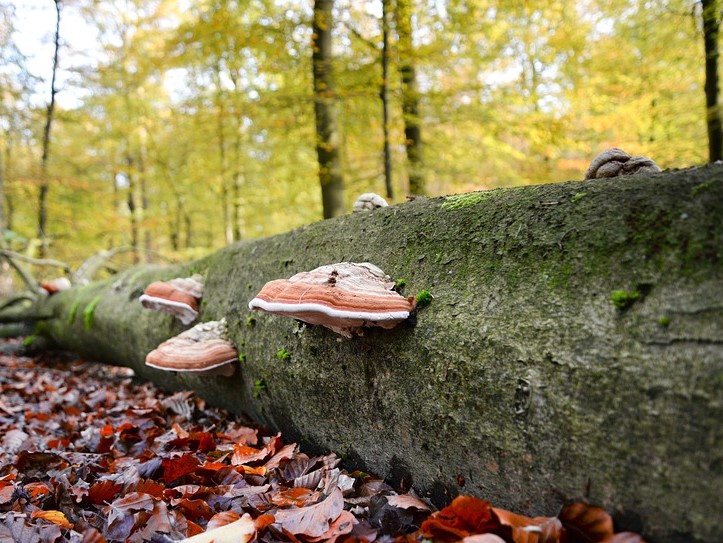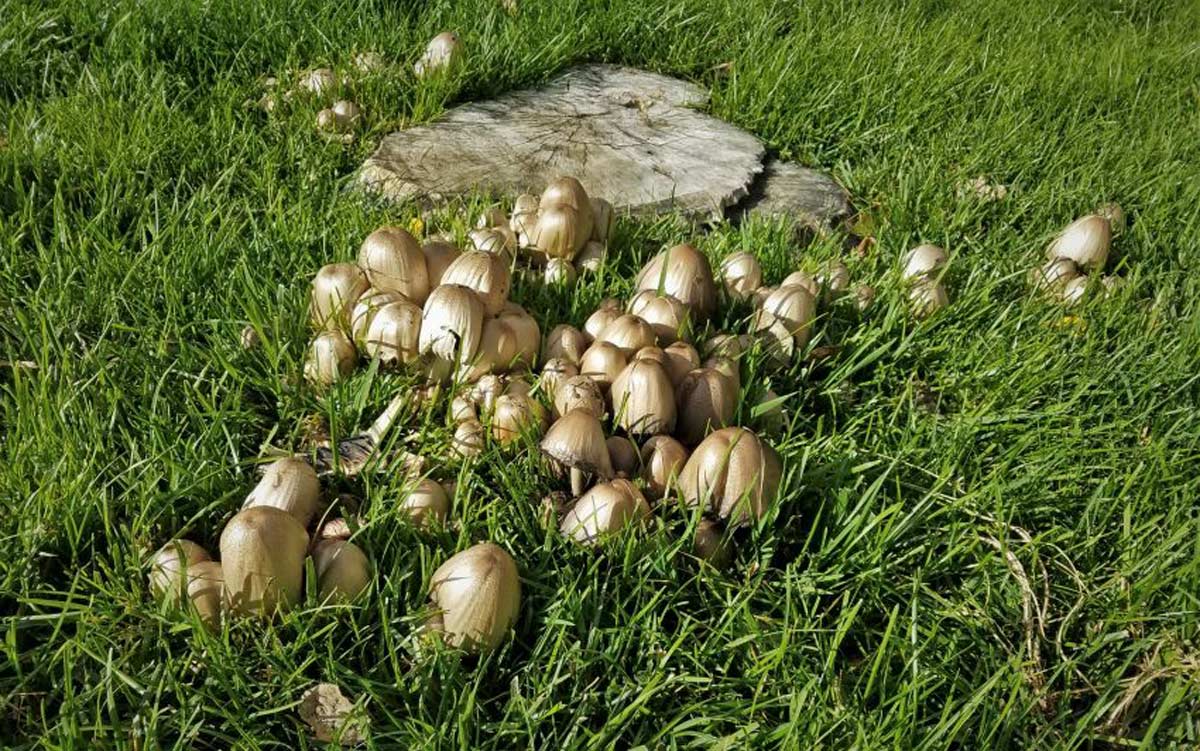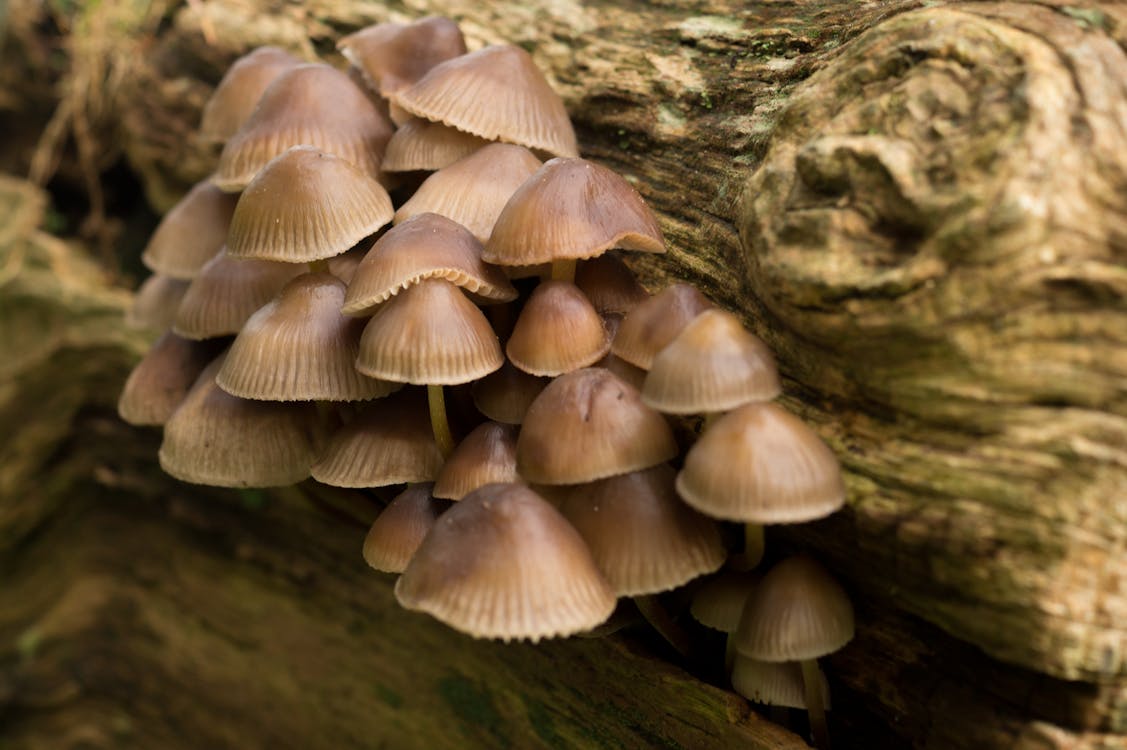Brown mushrooms seem to pop up overnight in gardens, growing in circles or mounds in grassy areas. While many people are curious about these mushrooms, some may find their spontaneous growth concerning. In this article, we’ll explore why brown mushrooms grow in gardens and lawns, how to identify them, and what to do if they appear in your yard.
Why Are There Brown Mushrooms in My Garden?
Seeing mushrooms growing in your garden is actually a normal, natural process Mushrooms and other fungi play a vital role in soil health and nutrient cycling They form mutually beneficial relationships with plant roots, helping shuttle nutrients like phosphorus to plants.
Brown mushrooms like those in the genus Agaricus and Lycoperdon especially thrive in lawns and amend garden beds That’s because they feed on decomposing organic matter like grass clippings, dead leaves, wood chips or compost. Healthy garden soil with ample organic materials provides an ideal habitat for mushrooms
Spotting mushrooms signifies your garden soil is alive with beneficial fungi and microbes. It’s a visible reminder of the unseen workings happening under the soil surface.
Identifying Brown Garden Mushrooms
Brown mushrooms you find growing in your yard most likely belong to a few common genera:
-
Agaricus – Includes the store-bought button mushroom In lawns, this genus produces the wide-capped field mushroom
-
Coprinus – The shaggy mane is a coprinus mushroom. Its bell-shaped cap deliquesces into an inky black goo as it releases spores.
-
Lycoperdon – Puffball mushrooms release clouds of brown powdery spores when touched or rained upon.
-
Lepiota – Parasols and scaly lepiotas have brown, scaly caps on slender stems.
Use a mushroom field guide or trusted online source to properly identify any brown mushrooms growing in your yard. Compare all parts of the mushroom including cap shape, gill color, stem appearance and texture. Be 100% certain of an ID before consuming any wild mushrooms.
Are Brown Mushrooms Harmful to My Garden?
In most cases, brown mushrooms are harmless or even beneficial additions to gardens. Species like agarics, puffballs and shaggy manes coexist naturally with lawn grasses. They spread via underground mycelium networks, not competing directly with plants for light and nutrients.
A couple exceptions are potentially problematic:
-
Chicken of the woods mushrooms can damage living tree trunks and roots as they feed on heartwood.
-
Honey fungus can parasitize the roots of woody plants, eventually killing them. Keep an eye out for mushrooms near declining shrubs or trees.
But overall, brown mushrooms signal healthy soil and a vibrant living soil food web. Their fruiting bodies cause no real harm. Enjoy them as fascinating examples of nature at work!
What to Do About Brown Mushrooms
If brown mushrooms sprouting in your yard present no issues, then simple observation and appreciation are all that’s needed. But you can take a few actions for mushrooms you’d rather remove:
-
Pick mushrooms to prevent spore release. Wear gloves and discard in yard waste, not compost.
-
For recurring mushrooms, scrape away the top 1-2 inches of soil which contains mushroom spores and mycelium.
-
Improve soil drainage and reduce compaction with aeration. This makes the environment less hospitable to mushrooms.
-
Allow grass to dry between waterings and mow higher to discourage fungal growth.
-
Apply lime to raise soil pH – most lawn mushrooms prefer acidic conditions.
-
Re-seed any dead patches where mushrooms are concentrated.
Keep in mind mushrooms will naturally reappear if conditions are right. A “no mushrooms allowed” policy is difficult to enforce long-term. Accepting them as part of a healthy garden ecosystem is recommended!
The Takeaway
Don’t be alarmed if you find brown mushrooms popping up in your yard or garden beds. They indicate healthy soil biology at work. Identify mushrooms accurately and control only those that pose issues like root damage. With proper ID and containment methods, most brown mushrooms can be appreciated for their intriguing role in the garden ecosystem.
Lawn Mushrooms are a Sign of a Living Soil
More fungi can be found in soil that has mushrooms, and mushrooms can only grow where there is organic matter from trees and shrubs. Fungi break down organic matter that is based on lignin. Lignin is found in woody things like tree roots, stumps, leaves, twigs, decaying mulch, and more.
Fungi-rich soils can help break down tree leaves and stems that are hard to break down that get stuck in the thatch layer. Fungi produce a strong enzyme that is able to break down woody material and even animal bones. Most of the time, mushrooms can be found next to organic matter that is breaking down slowly.
Some mushrooms can also be found under the drip line of trees, which may mean that mycorrhizae are active there. The word “mycorrhiza” means “fungus roots.” It is a good fungus that helps plants survive stressful situations like low fertility, drought, temperature extremes, and root pathogens.

How to Get Rid of Mushrooms in a Lawn?
Mushrooms are only prevalent in lawns when there is the presence of rotting wood. To get rid of the mushrooms you have to get rid of the decaying woody material.
If mushrooms are taking over your lawn, you might need to add more leafy things to the soil, like grass clippings and vegetable leaves instead of tree leaves. A good way to do this is to mulch the grass clippings to the soil. Bacteria-rich soils have more leafy-rich food present than woody-rich food. Fungi rich soils are more prevalent with lignin-based foods like tree leaves and decaying wood. If the soil has the right amount of bacteria and fungi, mushrooms will not grow as much.
There are times when mushrooms grow after there has been a lot of rain. This is because the extra rain can encourage good microbes to work. Mushrooms won’t hurt your lawn; in fact, they’re usually a good thing! They show that the soil is healthy, and we want healthy soils to grow strong trees and lawns. Most often the mushrooms will disappear almost as quickly as they appeared.
If you see mushrooms in your lawn, you now know that they are breaking down woody organic matter in the soil.


What To Do About MUSHROOMS In The Garden?
- The Ultimate Guide to Growing Strawberries in Raised Beds - August 8, 2025
- No-Dig Garden Beds: The Easiest Way to Grow a Beautiful Garden - August 6, 2025
- How to Protect and Preserve Wood for Raised Garden Beds - August 6, 2025

